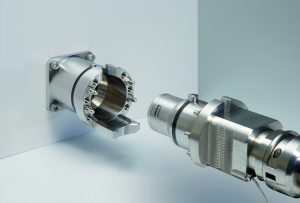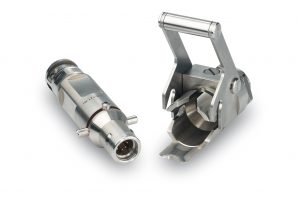
Challenges of ‘connecting’ within the nuclear power industry
By Peter Dent LEMO UK, Mario Colacino, LEMO Canada
Electronics Interconnect Supply Chain connector connector industry industry nuclear nuclearThe nuclear power industry demands long-term reliable solutions designed for the most severe environments.
Around the world, nuclear facilities are reaching the end of their lives as they pass half a century of service. The Canadian nuclear industry is becoming recognized as a driving force behind the global development of decommissioning equipment. The intensive decommissioning and clean-up process takes decades and involves extensive equipment to complete nuclear waste disposal and decontamination of the site. This is creating a robust market for connectors that can perform in these roles.
Unique challenges of nuclear industry
Working within the nuclear industry presents many unique challenges, as exposure to hazardous conditions means that many of the processes need to be controlled, monitored and maintained, remotely. As alpha-emitting isotopes are handled in sealed containers called glove boxes, gamma-emitting isotopes are handled within heavily shielded rooms, called hot cells. Tasks performed in these hot cells are managed remotely as the governing bodies operating these facilities practice the; As Low As Reasonably Achievable (ALARA) policy which minimizes operator exposure to harmful radiation.
To manage this requirement safely, effectively and efficiently a specialist branch of robotics known as tele-manipulators has evolved over the last few decades. They are similar in technology to traditional robots other than the operator remains an active element in the process loop. These tele-manipulators act as a natural extension of the human operator, as the tasks undertaken are typically unstructured and require real-time dexterous human intervention. Being highly sophisticated master-slave type devices, they enable the operator to complete a task at a safe distance whilst providing them with a sense of touch and feel. This feedback system is an essential element of the process, as the tasks performed generally require an extremely high level of accuracy and care.
For use in radioactive environment
Designing a device for use in a radioactive environment has considerable challenges, since many common materials and components have a short-life expectancy in high radiation. In addition, these devices and/or components need to withstand decontamination processes which involve a mild acid wash. Coupled with the unique material requirements, most tele-manipulators are mechanical devices which operate on a 1:1 ratio and therefore, the forces exerted at the slave side are limited by the human element input on the master side. Highly sophisticated force reflecting master-slave servo manipulators have been developed for heavier operations, but these are less common due to the obvious costs involved.

Lemo’s N series remote handling connector.
Electrical connectors designed for use in these environments have also evolved unique features as, critically, the main design consideration is a remote coupling requirement. With operators observing movements through a radiation shielding window (RSW) or via a CCTV System, connectors need to have a large mating capture area, as well as a self-coupling system that can be de-activated by gripper controls. In addition, low mating forces are an obvious benefit as this negates force restrictions associated with certain types of manipulators. Furthermore, observing operations through a window or via a monitor naturally impairs a depth perception in the Z axis and therefore designs also need to cater for this requirement by providing guiding aids to ensure precise interconnection.
Connector material selection is key
LEMO has supported the nuclear industry for many decades and during this period it has developed the N-Series range of connectors specifically designed for use in remote handling applications. With the hazardous environment, the first unique feature of this connector is the material selection. Housings are manufactured from stainless steel 304, while contact insulators are manufactured from Polyether ether ketone (PEEK) Thermoplastic and seals from Ethylene propylene diene monomer (EDPM) Elastomer, all of which exhibit excellent radiation resistant properties.
The second unique feature is the coupling / decoupling mechanisms. Products need to be robust and designed so that the can be coupled by remotely controlled robots and therefore self-guiding features are a pre-requisite. On the LEMO N series connectors there is an additional depth aid (bump bar) designed-in to help operators align the Z axis. In addition, latching systems are automatic with visual aids to help operators determine whether the connector has been fully engaged. Uncoupling these connectors is like other LEMO push-pull connectors, except the collar has flats for gripper operation. Furthermore, relatively low mating forces and optional CAM-assisted operation are also features you will find on these highly reliable heavy-duty connectors.

Remote handling connectors are suitable for robotic and telemanipulator applications.
As with the other processes within the industry, operations need to be completed remotely were achievable and therefore purpose built tele-manipulators are also widely used in this stage of the life cycle. Products need to be “fit for purpose” as this process can take years and therefore products need to be specifically designed and manufactured with this in-mind. Furthermore, the issue of low maintenance is another consideration for design engineers within these complex environments.
With the wide use of the tele-manipulators in the nuclear industry, many of the projects that LEMO support are for use not only in Canada but also in other countries using nuclear power such as Japan, Germany, France, UK and China.
